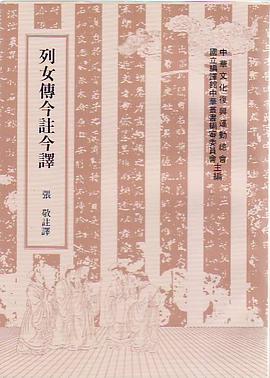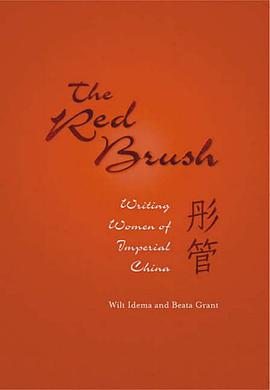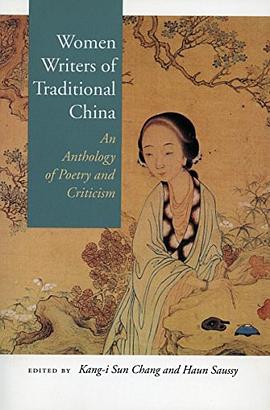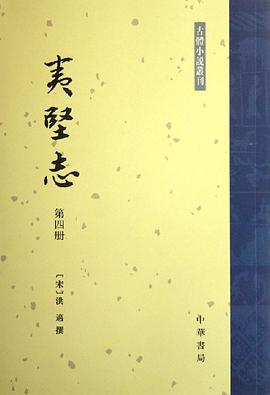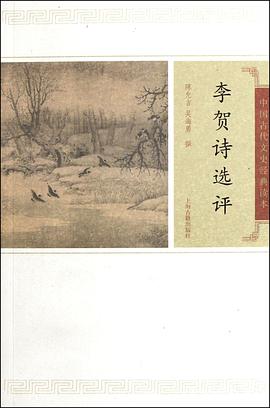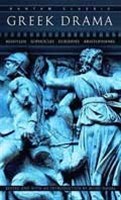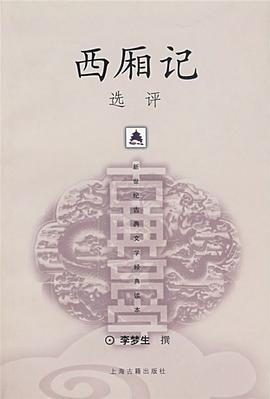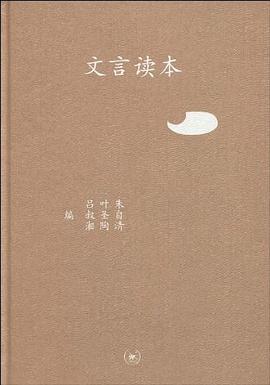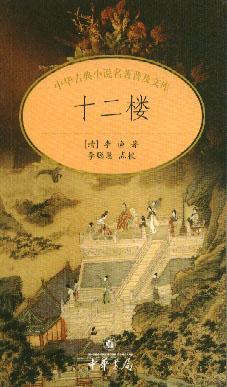古典文学
The Red Brush 豆瓣
作者:
Wilt L. Idema
/
Beata Grant
Harvard University Asia Center
2004
- 10
One of the most exciting recent developments in the study of Chinese literature has been the rediscovery of an extremely rich and diverse tradition of women's writing of the imperial period (221 BCE -1911 CE). Many of these writings are of considerable literary quality. Others provide us with moving insights into the lives and feelings of a surprisingly diverse group of women living in Confucian China, a society that perhaps more than any other is known for its patriarchal tradition. Because of the burgeoning interest in the study of both pre-modern and modern women in China, several scholarly books, articles, and even anthologies of women's poetry have been published in the last two decades. This anthology differs from previous works by offering a glimpse of women's writings not only in poetry but in other genres as well, including essays and letters, drama, religious writing, and narrative fiction. The authors have presented the selections within their respective biographical and historical contexts. This comprehensive approach helps to clarify traditional Chinese ideas on the nature and function of literature as well as on the role of the woman writer.
Women Writers of Traditional China 豆瓣
作者:
Chang, Kang-I Sun (EDT)/ Saussy, Haun (EDT)/ Kwong, Charles (EDT)/ Yu, Anthony C. (EDT)/ Kao, Yu-Kung (EDT)
Stanford University Press
2000
- 1
This anthology of Chinese women’s poetry in translation brings together representative selections from the work of some 130 poets from the Han dynasty to the early twentieth century. To measure the development of Chinese women’s poetry, one must take into account not only the poems but also the prose writings―prefaces, biographies, theoretical tracts―that framed them and attempted to shape women’s writing as a distinct category of literature. To this end, the anthology contains an extended section of criticism by and about women writers.
These poets include empresses, imperial concubines, courtesans, grandmothers, recluses, Buddhist nuns, widows, painters, farm wives, revolutionaries, and adolescent girls thought to be incarnate immortals. Some women wrote out of isolation and despair, finding in words a mastery that otherwise eluded them. Others were recruited into poetry by family members, friends, or sympathetic male advocates. Some dwelt on intimate family matters and cast their poems as addresses to husbands and sons at large in the wide world of men’s affairs. Each woman had her own reasons for poetry and her own ways of appropriating, and often changing, the conventions of both men’s and women’s verse.
The primary purpose of this anthology is to put before the English-speaking reader evidence of the poetic talent that flourished, against all odds, among women in premodern China. It is also designed to spur reflection among specialists in Chinese poetry, inspiring new perspectives on both the Chinese poetic tradition and the canon of female poets within that tradition. This partial history both connects with and departs from the established patterns for women’s writing in the West, thus complementing current discussions of “feminine writing.”
These poets include empresses, imperial concubines, courtesans, grandmothers, recluses, Buddhist nuns, widows, painters, farm wives, revolutionaries, and adolescent girls thought to be incarnate immortals. Some women wrote out of isolation and despair, finding in words a mastery that otherwise eluded them. Others were recruited into poetry by family members, friends, or sympathetic male advocates. Some dwelt on intimate family matters and cast their poems as addresses to husbands and sons at large in the wide world of men’s affairs. Each woman had her own reasons for poetry and her own ways of appropriating, and often changing, the conventions of both men’s and women’s verse.
The primary purpose of this anthology is to put before the English-speaking reader evidence of the poetic talent that flourished, against all odds, among women in premodern China. It is also designed to spur reflection among specialists in Chinese poetry, inspiring new perspectives on both the Chinese poetic tradition and the canon of female poets within that tradition. This partial history both connects with and departs from the established patterns for women’s writing in the West, thus complementing current discussions of “feminine writing.”
夷堅志(全四冊) 豆瓣
作者:
洪迈
中华书局
2006
- 10
《夷坚志(套装全4册)(繁体竖排版)》主要包括:《夷坚志(1册)(繁体竖排版)》、《夷坚志(2册)(繁体竖排版)》、《夷坚志(3册)(繁体竖排版)》和《夷坚志(4册)(繁体竖排版)》。中国古代小说的概念非常宽泛,内涵很广,类别很多,又是随着历史的发展而不断演化的。古代小说的界限和分类,在目录学上是一个有待研究讨论的问题。古人所谓的小说家言,如《四库全书》所列小说家杂事之属的作品,今人多视为偏重史料性的笔记,我局已择要编入《历代史料笔记丛刊》,陆续出版。现将偏重文学性的作品,另编为《古体小说丛刊》,分批付印,以供文史研究者参考。所谓古体小说,相当于古代的文言小说。为了便于对举,参照古代诗体的发展,把文言小说称为古体,把五四一之前的白话小说称为近体,这是一种粗略概括的分法。本丛刊选收历代比较重要或比较罕见的作品,采用所能得到的善本,加以标点校勘,如有新校新注的版本则优先录用。个别已经散佚的书,也择要作新的辑本。古体小说的情况各不相同,整理的方法也因书而异,不求一律,详见各书的前言。编辑出版工作中不够完善之处,诚希读者批评指正。
Greek Drama 豆瓣
作者:
Moses Hadas
Bantam Classics
1984
- 1
In power, passion, and the brilliant display of moral conflict, the drama of ancient Greece remains unsurpassed. For this volume, Professor Hadas chose nine plays which display the diversity and grandeur of tragedy, and the critical and satiric genius of comedy, in outstanding translations of the past and present. His introduction explores the religious origins, modes of productions, structure, and conventions of the Greek theater, individual prefaces illuminate each play and clarify the author's place in the continuity of Greek drama.
西厢记选评 豆瓣
作者:
李梦生
2002
- 1
《西厢记》所描述的崔莺莺与张生的恋爱故事,取材于唐元稹的《莺莺传》传奇。《莺莺传》故事始于张生挑逗、莺莺峻拒,终于两人交好,而张生另娶,莺莺遭到负心郎的抛弃。《莺莺传)中的张生,是元稹自己的写照。元稹集中有《古艳诗二首)、《离思》、《莺莺诗》、《春晓》、《赠双文》、《会真诗三十韵》等,皆追忆双文(莺莺)所作,其《离思)之“曾经沧海难为水,除却巫山不是云”句,历来为人称道。张生、莺莺恋爱以悲居1结束,本无可深责,但元稹在小说末斥莺莺为尤物,称张生为“善补过者”,为自己,为封建道德涂脂抹粉,其主题便不是歌颂男女爱情自由,而是走向了反动,所以鲁迅先生说“篇末文过饰非,遂堕恶趣”。
十二楼 豆瓣
作者:
李渔
/
校注 李聪慧
中华书局
2004
- 11
清顺治八年(1651),李渔来到杭州,一住十年。在美丽的本子湖畔,他渔迎来了自己的创作高潮,写作了大量的戏曲小说作品。著名的话本小说集《十二楼》就是此期间完成的。
《十二楼》共十二卷,每卷写一故事,因为每个故事里都有一座楼阁,人物命运和情节展开往往与楼有关,故全书命名为“十二楼”,由此可看出李渔做小说之匠心。
《十二楼》具有很强的娱乐性,格调轻松快乐。他的作品往往不具有深刻的社会内涵和思想境界,但每一篇都清新风趣,惹人喜爱。
十二个故事,绝大多数出身于李渔自己的构思,而不是引用别人素材。
作品都主题鲜明,线索明晰,中心人物贯穿始终,在叙述过程中决不横生枝蔓。情节设计新颖奇特,尽量曲折出奇,悬念丛书,出人意表,但衔接上自然合理,不留破绽。而结局又是在意料之外、情理之中。
《十二楼》共十二卷,每卷写一故事,因为每个故事里都有一座楼阁,人物命运和情节展开往往与楼有关,故全书命名为“十二楼”,由此可看出李渔做小说之匠心。
《十二楼》具有很强的娱乐性,格调轻松快乐。他的作品往往不具有深刻的社会内涵和思想境界,但每一篇都清新风趣,惹人喜爱。
十二个故事,绝大多数出身于李渔自己的构思,而不是引用别人素材。
作品都主题鲜明,线索明晰,中心人物贯穿始终,在叙述过程中决不横生枝蔓。情节设计新颖奇特,尽量曲折出奇,悬念丛书,出人意表,但衔接上自然合理,不留破绽。而结局又是在意料之外、情理之中。
